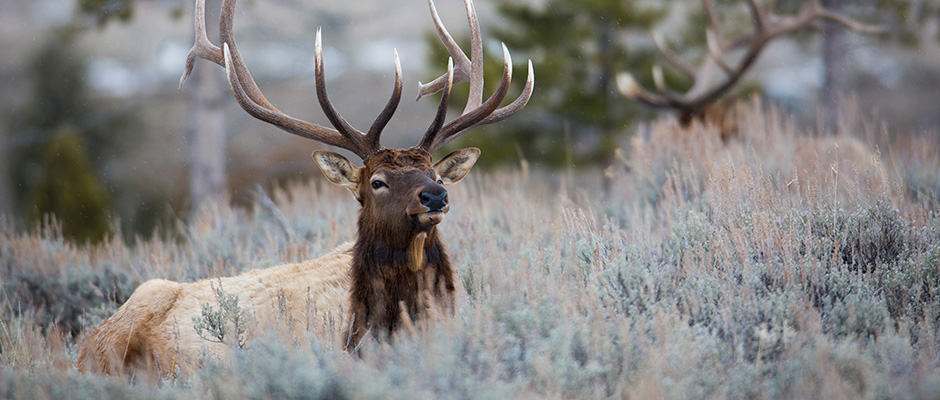Share this article
Researchers Share Findings Through Social Media
Wyoming’s big game just joined the 21st century.
Last week, the Wyoming Migration Initiative and the Wyoming Game and Fish Department began reporting about eight animal captures and studies on newly created Facebook and Twitter accounts — an effort that will continue through March 21. In a similar social media initiative earlier this winter, the WMI and WGFD tweeted and posted about scientists’ deer captures in order to learn more about the state’s struggling mule deer populations.
The agencies are hoping to raise public awareness about big game animals by posting about big game studies and research online. Researchers from the University of Wyoming, the Wyoming Game and Fish Department, the U.S. Geological Survey and other partners are conducting eight studies, of which two have already begun, by capturing big game in western and southern Wyoming including moose, elk, mule deer and bighorn sheep. The first study — led by Arthur Middleton, research associate with Yale School of Forestry and Environmental Studies — involved an elk capture in Northwest Wyoming as part as an effort to map elk migrations in Yellowstone National Park. WMI Director Matt Kauffman, who is tweeting about the research, tweeted:
Capture is on! Off goes our 4th #wyoelk elk of today. Conditions superb.
Through similar tweets and Facebook posts, agency officials hope to cover a diverse range of research topics including deer migration, fat levels in deer, and nutrition and disease in bighorn sheep.
WMI and WGFD are live-tweeting and creating Facebook posts following the researchers as they capture animals for their studies. Kauffman will be behind many of the tweets from the Twitter handle @wgfd, and also is tweeting from his own account @wyokauffman.
“Wyomingites care deeply about these herds and the habitats they occupy, so it’s a great opportunity for us to give them, and people beyond Wyoming, a closer view of how and why we are doing this research,” Kauffman said in a press release.
Other individuals including state biologists and wardens also will be live-tweeting the captures from @wgfd. Hashtags #wyodeer, #wyomoose, #wyoelk and #wyosheep will be used so users can search and find studies they are interested in. The USGS also will be tweeting about the research from the handle @usgs and @USGSCoopUnits to bring in more national interest.
WMI also will frequently update its Facebook page at www.facebook.com\migrationinitiative with posts of status updates, videos and photos. WGFD’s Facebook Page is www.facebook.com/WyoGFD and also will include updates on the research. Aside from reporting the captures, tweets and Facebook posts will include photos, short video interviews, maps and graphics. They also will include links to related material including existing papers, reports, news articles, interviews and YouTube videos.
“Many of these studies have been ongoing for several years in remote and hard-to-access areas of Wyoming. They are used to make important decisions about wildlife management,” said Wyoming Game and Fish Department Communications Director Renny MacKay in a press release. “Social media allow us to give the public a new look at this valuable research.”
The studies are funded by state and federal managers, sportsmen’s groups, nongovernmental organizations and private foundations. To stay up to date about the rest of the eight studies in Wyoming, individuals can keep track of WMI’s tweets and Facebook posts. The public also is encouraged to join the conversation by adding comments during the three week social media and research event.
Header Image:
An elk looks into the distance at Yellowstone National Park. The elk population is among the big game in Wyoming that researchers plan to study and share on social media as part of Wyoming Migration Initiative and Game and Fish’s social media effort.
Image Credit: Yellowstone National Park








